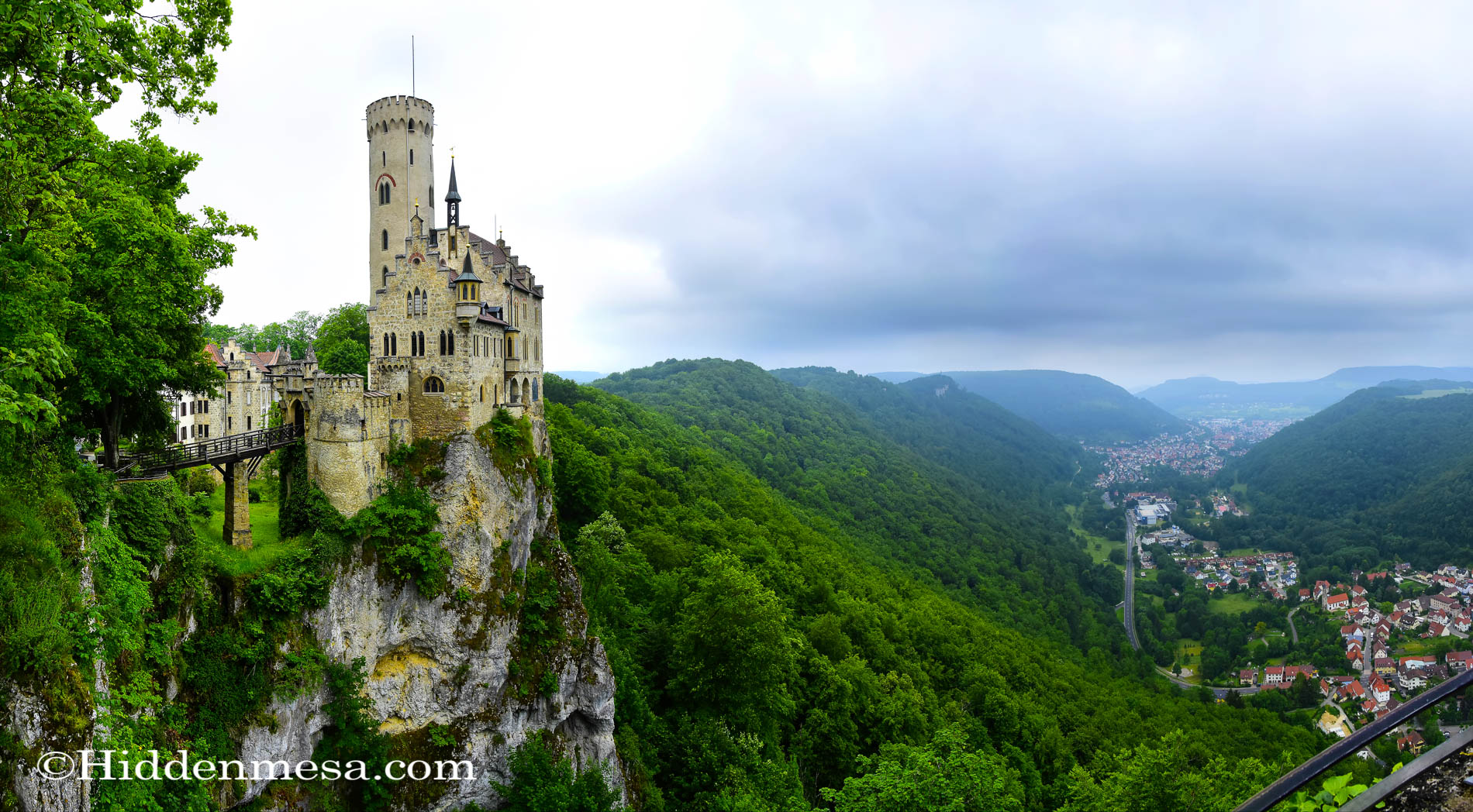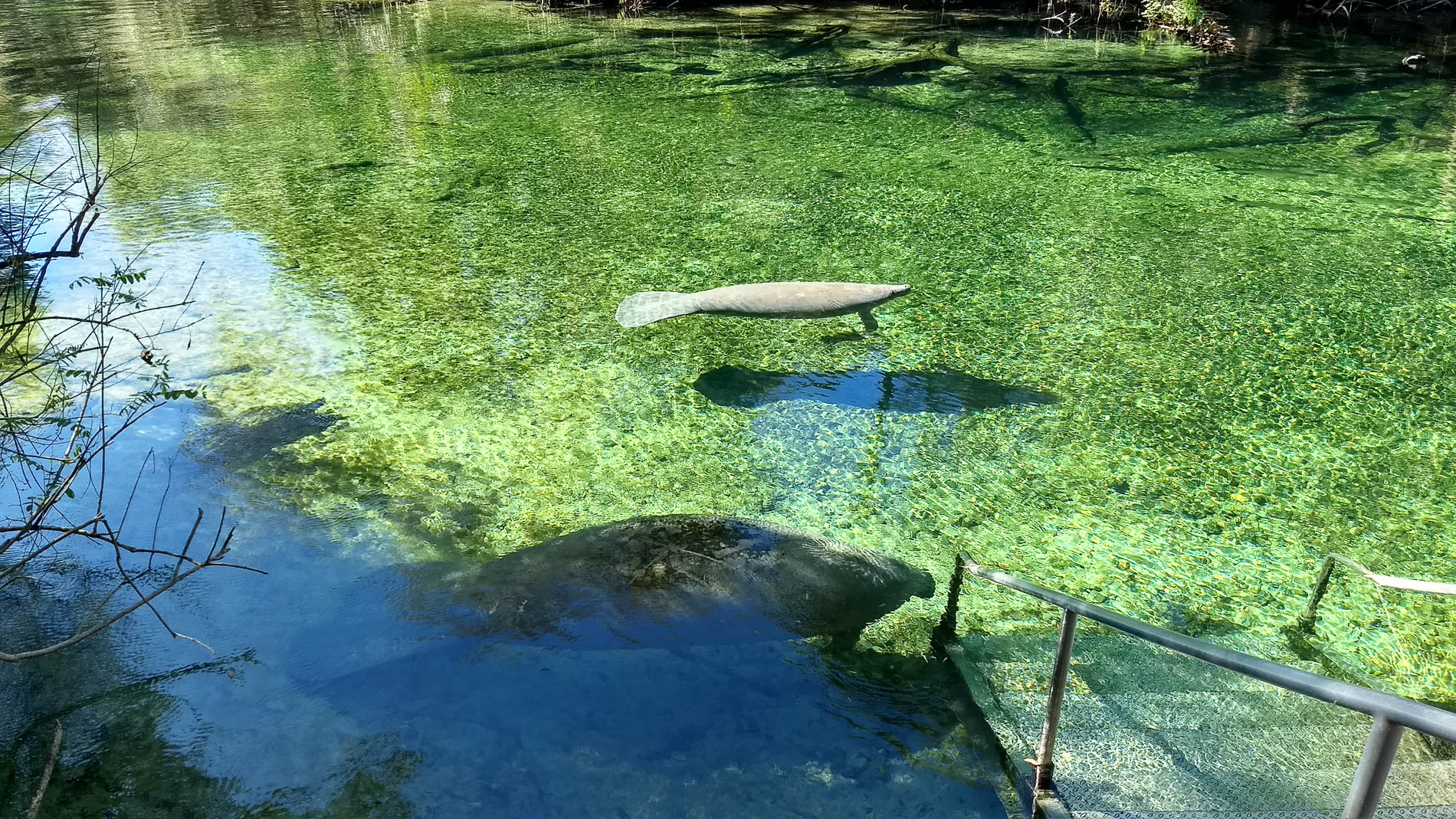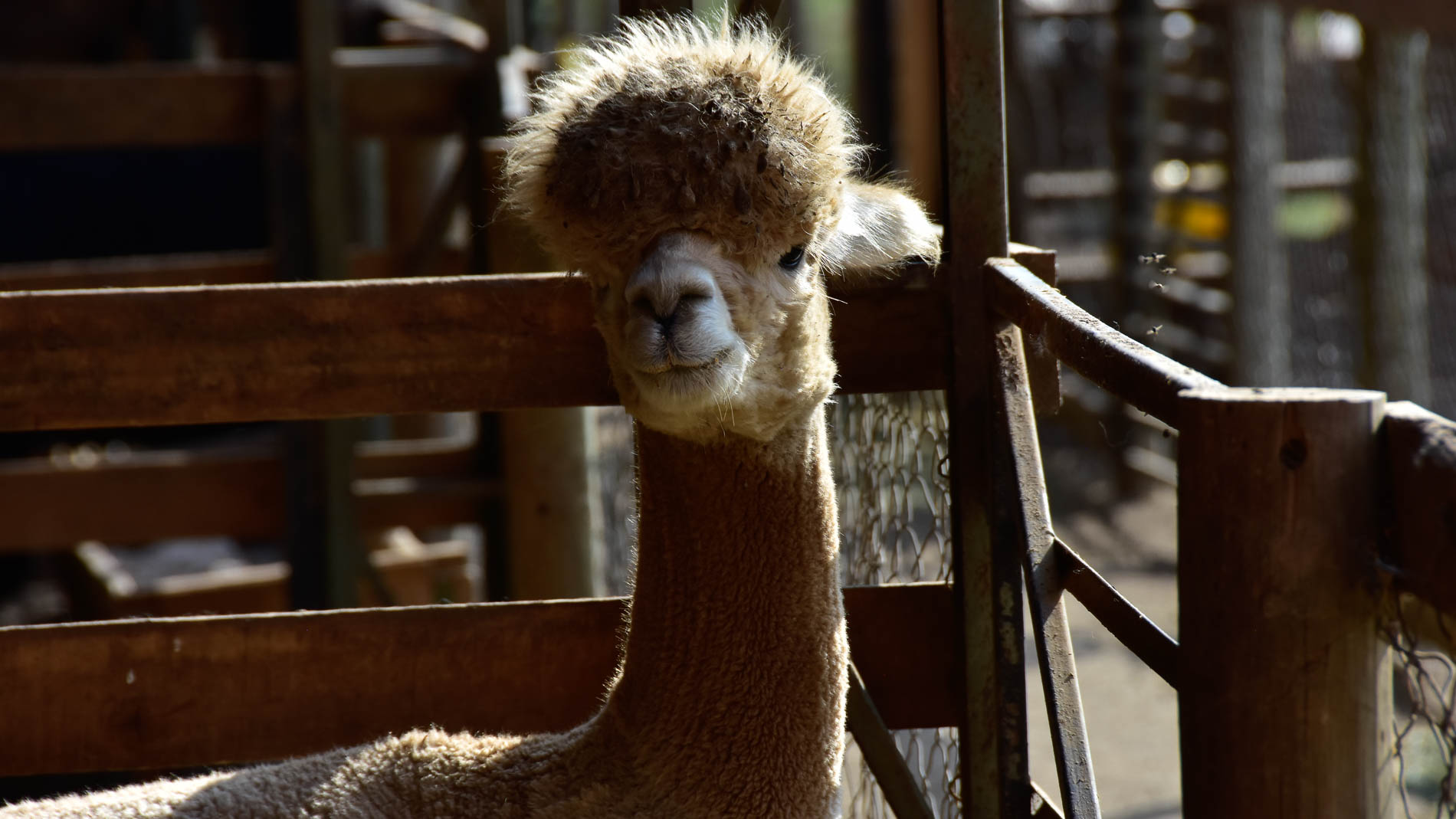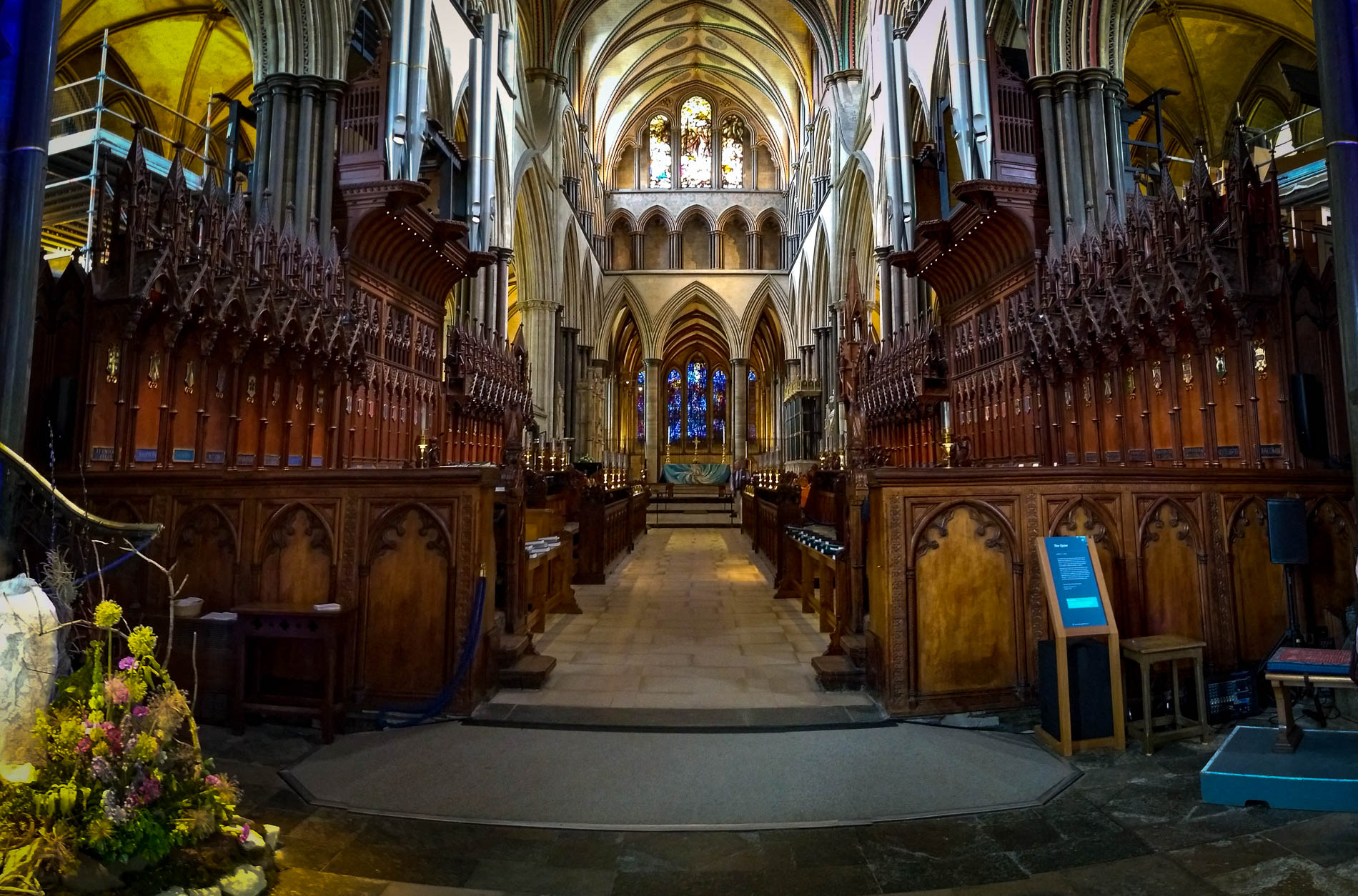On our first trip to Germany, we paid a visit to Lichtenstein Castle in southern Germany. This privately held Schloss is perched high on a white rock cliff overlooking the Echaz River and the town of Honau in the German state of Baden-Württenberg. We were so impressed with this castle that we came back a second day to get a better look of the buildings with a better sky.
Early History
The site where Lichtenstein Castle now sits has a history that goes back as far as the 4th or 5th century, but the most notable period starts around AD 1100 when another castle was located on the site. It was occupied by a group of “Ministerials” of the counts of Achalm, and later the counts of Württemberg.
Ministerials was a term referring to, in this case, knights. They were an interesting class of people in that they were not free people, but were considered to be nobility of sorts. In this case, the knights lived in the castle and were charged with defending the interests of the counts.
Since the counts were not particularly friendly with the folks over in Reutlingen, they were under frequent attack. The castle was destroyed twice, once during the imperial civil war of 1311 and once again at some point between 1377 and 1381. These ruins most likely are still there since they were locate about 500 meters away from the current buildings.
In 1390 the castle was built again, but on the site of the present day castle. This time it was regarded as the best fortified castle of the Middle Ages, and was in use until around 1567 when the then owners abandoned it. In 1802, King Frederick I of Württemberg acquired the property and dismantled the castle to the foundation and built a hunting lodge.
The present day castle was constructed around 1840 by Duke Frederick of Wurttemburg, who was inspired by the book, Lichtenstein, written in 1826 by Wilhelm Hauff, a German Poet.
According to Wikipedia, Lichtenstein in German means “Shining Stone,” but a literal translation according to Google means, “thin stone.” Whatever its true meaning, we thought the castle was worth the time it took to visit.
Touring the Castle
On the first day we were here, no tours were offered in English, so we took the German language tour. It was of course accompanied with an English written guide, and it was fun to challenge our German skills.
No photography is allowed on the inside of the castle. In many cases,gallery here this is because the property is privately owned, but in this particular case, the most likely reason is because nearly all the walls are covered with original art. And it’s not art hanging on the walls, but the actual walls are painted with artful scenes. After a few million flashes, the paint would no doubt begin to fade prematurely. Whatever the reason, we weren’t able to capture images on our tour of the castle, but you can see their .
We came back a second day just to get some images of the outside grounds because the weather was more cooperative and we had some blue skies for our backdrop.
To Get There
We were staying in Baden-Baden when we visited Lichtenstein Castle. We mentioned Baden-Baden in an earlier post, along with some pictures here.The drive was about two hours to get from one place to another, but that was part of the reason we were in Germany, to see a bit of the country. Fortunately, there are two ways to get there, so we were able to make a trip there on one road and return on another, making a full day’s loop out of the trip.
One of the things we did before our trip was to go online to Google Maps and make note of all the latitude/longitude coordinates of all the castles and other important places we planned to visit. We’re not sure if the GPS receivers and maps are less reliable in Europe than they are in the states, or if we simply didn’t understand the addressing system. Whatever the reason, it has been handy a few times to have the coordinates along to tell the GPS where we’re trying to go. And of course, we do know how to read maps, but somehow reading a map in German wasn’t nearly as easy as simply punching in a couple of coordinates to the GPS.
We’re not planning to return to Lichtenstein Castle on our upcoming trip to Germany this summer, but it’s only because we plan to be in a different part of the country, and our traveling won’t necessarily take us that far south again in the near future. Still, if we were in the area, it would certainly be on our list of places to see once more.









